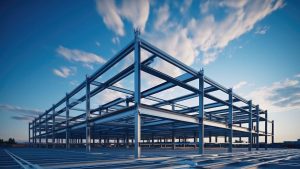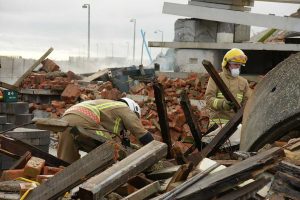When it comes to building construction, choosing the right material is essential to ensure the durability, strength and sustainability of the structure. Steel has emerged as one of the most popular materials for construction due to its numerous benefits. From high strength and durability to energy efficiency, steel offers a wide range of advantages that make it the perfect choice for building construction.
One of the biggest advantages of using steel in construction is its strength and durability. Steel has an excellent strength-to-weight ratio, which means it can support heavy loads without being bulky. This makes steel an ideal choice for constructing buildings that require high strength and stability, such as industrial warehouses and commercial buildings.
Additionally, steel is highly durable and can withstand harsh environmental conditions, such as extreme temperatures and high winds. It is also resistant to pests and fire, making it a safer building material.
Advantages of Steel Buildings
Steel buildings offer numerous advantages over other types of construction materials. Steel is incredibly strong, durable, and cost-effective. It is also highly customizable, allowing builders to create structures that meet specific design and functional requirements.
Steel buildings are also easy to assemble and maintain, and they can withstand a wide range of environmental conditions. Steel buildings are also resistant to pests and fire, making them a safer building material.
Another advantage of steel buildings is their cost-effectiveness. Steel construction allows for faster construction times, reducing labour costs and minimising construction waste. In addition, steel buildings require less maintenance compared to other construction materials, reducing long-term costs.
Steel buildings are also energy-efficient, as they can be designed to incorporate features such as insulation, natural lighting, and ventilation, reducing energy consumption and costs.
Design and Construction of Steel Buildings
The design and construction process of steel buildings involves several key steps. Firstly, builders will need to select the type of steel that best suits their needs, such as hot-rolled, cold-formed, or pre-engineered steel.
Once the steel has been chosen, builders will need to design the structure using computer-aided design (CAD) software. This allows for precise calculations and ensures that the structure will be able to withstand the required loads and environmental conditions.
After the design phase is complete, the steel will be cut, welded, and assembled into the desired shape. Steel structures can be erected quickly, which reduces construction time and labour costs. Finally, the steel structure will be transported to the building site and erected. The use of steel in construction allows for a faster construction process, which means buildings can be completed in less time than with other construction materials.
Applications of Steel Buildings
Steel buildings can be used for a wide range of applications, including warehouses, commercial buildings, and residential homes. They are also ideal for building structures that require high strength and stability, such as bridges and industrial facilities. Steel buildings can be designed to meet the specific needs of each application, ensuring that they are strong, durable, and functional.
One of the primary benefits of using steel in construction is its versatility. Steel buildings can be designed in a wide range of sizes and shapes, which allows for customization based on the specific requirements of the application. This flexibility also means that steel buildings can be designed to meet a variety of design aesthetics, making them a popular choice for architects and builders.
Sustainability and Energy Efficiency
Steel is a highly sustainable and energy-efficient construction material. It is 100% recyclable, meaning that it can be repurposed or reused at the end of its useful life. Steel buildings can also be designed to be energy-efficient, with features such as insulation, natural lighting, and ventilation. This reduces energy consumption and costs, while also minimizing the environmental impact of construction.
Steel is also a highly durable material, which means that it can last for many years with minimal maintenance. This reduces the need for replacing or repairing building components, which can be costly and contribute to environmental waste. In addition, steel can be prefabricated off-site, which reduces the amount of waste generated during the construction process. This not only saves time and money but also reduces the carbon footprint associated with building construction.
Furthermore, steel buildings are ideal for green construction, as they can incorporate features such as rainwater harvesting, solar power, and energy-efficient lighting. This reduces the building’s impact on the environment while also providing cost savings in the long run. Steel is also a highly sustainable material, with a low embodied energy that makes it an excellent choice for environmentally conscious builders.
Conclusion
In conclusion, steel is an excellent choice for building construction due to its strength, durability, cost-effectiveness, and sustainability. Whether you are building a warehouse, commercial building, or residential home, steel offers a wide range of benefits that make it the perfect choice for construction.
The versatility of steel allows for customization to meet specific requirements, and its durability ensures that it will last for many years with minimal maintenance. Consider steel as a viable and sustainable option for your next building project.




